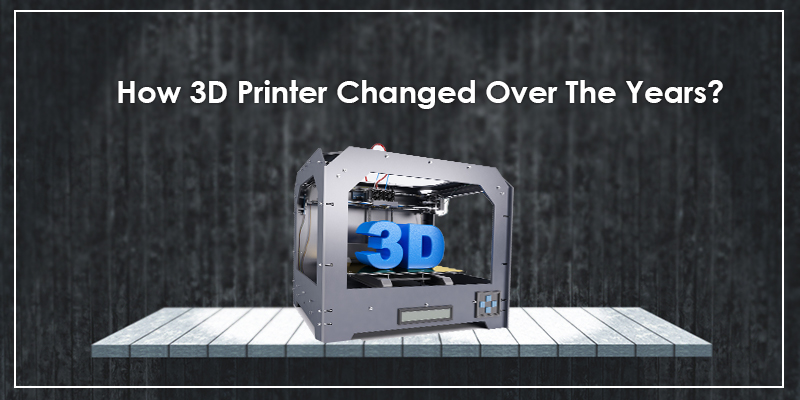Though 3D printers became a trend on social media recently, the technology behind 3D printing dates back to the early 80s. No doubt, 3D printing is cool, and making physical objects sounds futuristic, but how many of us know the history behind it, like who invented it, what was the first 3D printer looked like, and so on. Let’s take a step back and see how 3D printers changed over the years and how it all started.
The first idea and its manifestation
The idea behind 3D printing was coined in the early 1970s. But the real experiments were conducted in 1981. Dr. Kodama from Japan filed the first patent for Rapid Prototyping, which became the base architecture for 3D printing that we see today. However, due to insufficient funding, Dr. Kodama dropped the project after one year as he couldn’t fund the next part of the patent. To share his knowledge with the world, Dr. Kodama wrote two papers about 3D printing, in which he explained the process of 3D printing step-by-step.
Dr. Kodama was the first individual who shared the idea of layer-by-layer printing using SLA (or Stereolithography). After his contribution, french engineers Alain Le Méhauté, Olivier de Witte, and Jean-Claude André started a venture for 3D printing. After developing the prototype printer, the trio abandoned the project due to a lack of business perspectives.
The second wave of 3D printers
Even though Alain Le Méhauté, Olivier de Witte, and Jean-Claude André dropped the project before it gained recognition in the engineering world, the french engineers developed the first 3D printer, and the first thing they printed was a staircase. The trio failed in their endeavor because CNRS(The French National Centre for Scientific Research) didn’t like the idea behind 3D printers. There were some flaws in the equations, and sectoral applications were missing from their project. As a result, the team disbanded, and each of the three individuals moved on with their lives. Once again, 3D printing shifted to other inventors. Among them, Chuck Hull was the first to commercialize Stereolithography for 3D printers.
Chuck Hull and Stereolithography (SLA)
In 1983, Chuck was working with a company that specializes in tough coating for furniture. The technology used in those tough coatings used to take 2-3 months to develop. However, Chuck ignited the idea of using layers of plastic and converting them into a single object using UV lights. The company granted Chuck’s request and gave him a small lab to experiment with his theory. After months of experimentations, Chuck finally created a device that could print physical objects. He quickly filed the patent for the technology and started commercializing Stereolithography, and his first product came out in 1988.
The birth of Selective Laser Sintering (SLS)
Even though Chuck’s idea was fantastic, he felt that 3D printing was still a new subject to the world in terms of actuality. It would take at least 30-40 years for a proper assembly line for 3D printers to be manufactured professionally. However, little did he know, an undergraduate student will change 3D printing forever. Carl Deckard was an undergraduate student at the University of Texas. After a summer camp at an iron-based machine shop (TRW) in Houston, he started working on a new method for casting objects. After two and a half years, Carl invented Selective Laser Sintering (SLS) technology. He received support from engineers, magazines, and institutes. In 1988, Carl was the center of attention due to this new technology that further enhanced 3D printing and made it accessible for people.
The Fused Deposition Modelling (FDM) technology by Scott Crump
Scott Crump invented the FDM technology in his garage. While creating a toy for his 2-year-old daughter, he accidentally forged the idea of using candle wax, polyethylene, and a hot glue gun. After releasing the concept of forming 3D objects with a hot glue gun, Scott and his wife filed a patent for FDM technology, which used automation with hot glue guns. Scott Crump and Lisa Crump started the production of the first 3D printers under the company name Stratasys. Today, Stratasys operates in more than ten countries, and it is considered one of the pioneer firms in 3D printer manufacturing.
The commercialization of 3D printers in the 2000s
After almost 30 years of experimentations, failures, and discoveries, the world finally accepted the existence of 3D printers. Companies like Stratasys, MakerBot, and 3D Systems gained international recognition, and 3D printers became an actual thing. Sectors like aerospace, manufacturing, robotics, and education saw a leap in the teaching methods. New companies started advancing the knowledge of 3D printers with new models, technologies, and affordability. Fast forward to 2021, 3D printers are capable of printing parts of a human body. The most significant advancement of 3D printers is printing 3D organs, which will be used as real organs in the near future. As of right now, 3D printers can print prosthetic legs, arms, fingers, and much more. It is only a matter of time when we see 3D printers printing actual human organs and making them affordable and accessible to common people.
Final thoughts
3D printing is a fantastic technology. From replicating objects to creating usable organs, there is so much potential in the technology that it will transform humans’ anatomy, making them less dependable on natural advancements. Scientists and engineers are working towards new dawn that will benefit humanity as a whole. We can only look forward to the technology and how it will impact our lives in the next 10-15 years. Right now, 3D printers are pretty affordable, and a typical 3D printer can cost around $200-$300, and the more expensive ones can go up as high as $2000-$5000.

